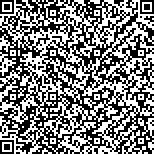| 引用本文: |
杨宝义,王建伟,夏士涛,王培宇,刘勇.复方麝香注射液联合尼莫地平治疗高血压性脑出血微创清除术后患者的疗效观察[J].湖南中医药大学学报,2019,39(9):1153-1156[点击复制] |
|
| |
|
|
| 本文已被:浏览 2830次 下载 851次 |
| 复方麝香注射液联合尼莫地平治疗高血压性脑出血微创清除术后患者的疗效观察 |
| 杨宝义,王建伟,夏士涛,王培宇,刘勇 |
| (黑龙江中医药大学附属第一医院, 黑龙江 哈尔滨 150040) |
| 摘要: |
| 目的 观察复方麝香注射液联合尼莫地平治疗微创清除术后高血压性脑出血患者的临床疗效,探讨其临床应用价值。方法 选取2018年5月至2019年5月本院收治的96例高血压脑出血患者,随机分为观察组和对照组,每组48例。对照组在基础治疗及护理的基础上给予尼莫地平注射液14 d,后改用尼莫地平片继续服用14 d;观察组在对照组的基础上加用复方麝香注射液静脉滴注28 d。观察两组患者治疗前后的血肿量、水肿量、神经功能缺损程度[美国国立卫生研究院卒中量表(national institute of health stroke scale,NIHSS)评定]、血清学相关指标[白细胞介素-6(interleukin-6,IL-6)、肿瘤坏死因子-a(tumor necrosis factor-a,TNF-a)、基质金属蛋白酶-9(matrix metalloprotein-9, MMP-9)],以及治疗后临床疗效。结果 (1)治疗后,两组患者的血肿量、水肿量均较本组治疗前减少,NIHSS评分均较本组治疗前降低,差异均有统计学意义(P<0.05),且观察组低于对照组(P<0.05);(2)治疗后,两组患者的血清IL-6、TNF-a、MMP-9均较本组治疗前下降(P<0.05),且观察组低于对照组(P<0.05);(3)治疗后观察组患者的总有效率为95.83%,高于对照组的81.25%(P<0.05)。结论 采用复方麝香注射液联合尼莫地平治疗微创清除术后高血压性脑出血患者,可促进患者颅内血肿吸收,改善神经功能缺损,疗效显著,值得临床推广。 |
| 关键词: 高血压性脑出血 复方麝香注射液 尼莫地平 微创清除术 血肿量 水肿量 神经功能缺损程度 血清学指标 |
| DOI:10.3969/j.issn.1674-070X.2019.09.022 |
| 投稿时间:2019-04-25 |
| 基金项目:黑龙江中医药科研项目(ZHY12-2028);黑龙江中医药大学校科研基金(201702)。 |
|
| Observation on the Efficacy of Compound Shexiang Injection Combined with Nimodipine in Patients with Hypertensive Intracerebral Hemorrhage after Minimally Invasive Surgery |
| YANG Baoyi,WANG Jianwei,XIA Shitao,WANG Peiyu,LIU Yong |
| (The First Affiliated Hospital of Heilongjiang University of Chinese Medicine, Harbin, Heilongjiang 150040, China) |
| Abstract: |
| Objective To observe the clinical efficacy of Compound Shexiang Injection combined with nimodipine in the treatment of hypertensive intracerebral hemorrhage after minimally invasive surgery, and to explore its clinical application value. Methods A total of 96 patients with hypertensive intracerebral hemorrhage admitted to our hospital from May 2018 to May 2019 were selected and randomly divided into an observation group and a control group, with 48 cases in each group. The control group was given Nimodipine Injection for 14 d on the basis of basic treatment and nursing, then Nimodipine Tablets were used for 14 d; the observation group was given Compound Shexiang Injection intravenously for 28 d on the treatment basis of the control group. The amounts of hematoma and edema, the degree of neurological deficit[evaluated by American National Institute of Health Stroke Scale (NIHSS)], and serum related indicators[interleukin-6 (IL-6), tumor necrosis factor-α (TNF-α), and matrix metalloprotein-9 (MMP-9)] before and after the treatment, and the clinical efficacy after the treatment were observed in the 2 groups. Results (1) After the treatment, the amounts of hematoma and edema in the 2 groups were less than those before the treatment, and the NIHSS score was less than that before the treatment, with statistically significant difference (P<0.05), and that in the observation group was lower than that in the control group (P<0.05). (2) After the treatment, the serum IL-6, TNF-α and MMP-9 in the 2 groups were all less than those before the treatment (P<0.05), and those in the observation group were lower than those in the control group (P<0.05). (3) After the treatment, the total effective rate in the observation group was 95.83%, higher than 81.25% in the control group (P<0.05). Conclusion Compound Shexiang Injection combined with nimodipine in the treatment of hypertensive intracerebral hemorrhage after minimally invasive surgery can promote absorption of intracranial hematoma and improve neurological deficit. The efficacy is remarkable and worthy of clinical promotion. |
| Key words: hypertensive intracerebral hemorrhage Compound Shexiang Injection nimodipine minimally invasive surgery hematoma volume edema volume degree of neurological deficit serological indicators |
|

二维码(扫一下试试看!) |
|
|
|
|




